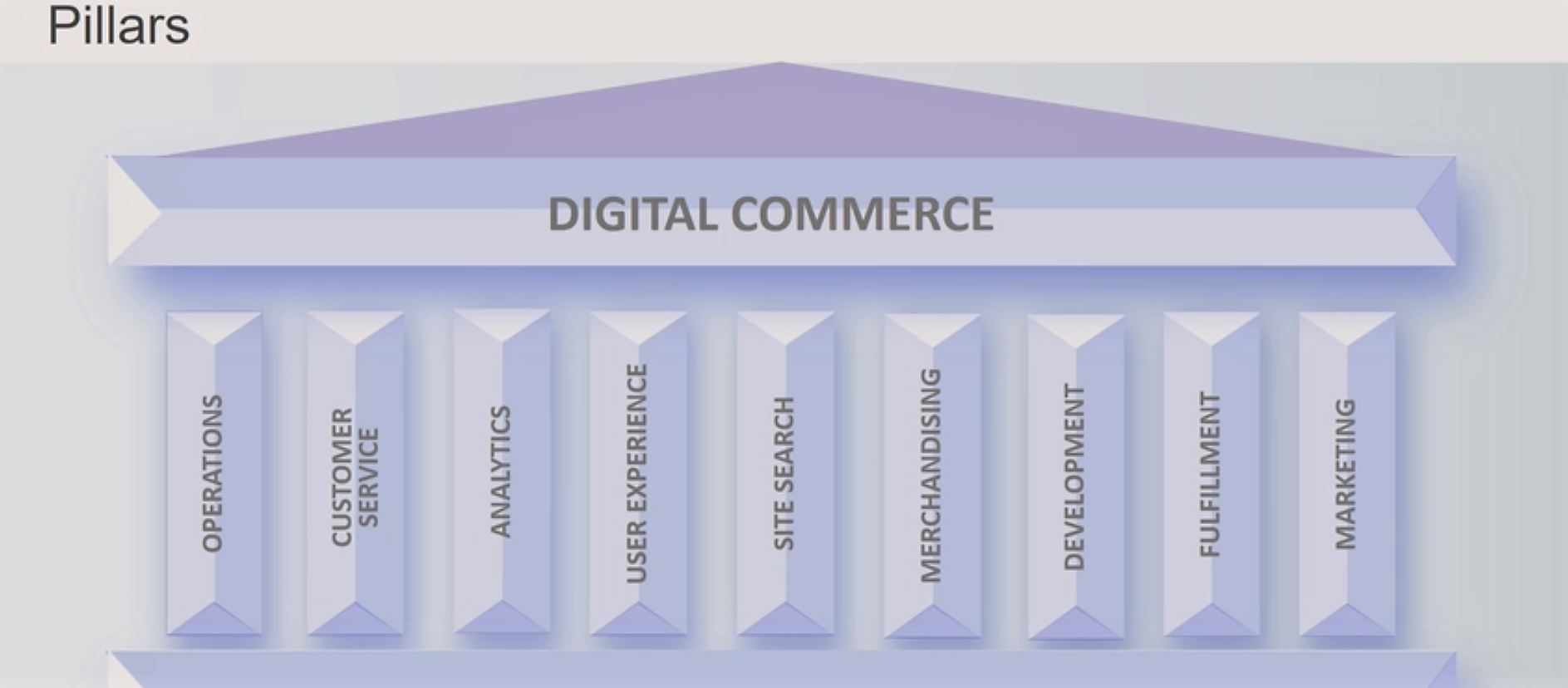Article
Rite Aid leader shares insight on its successful e-commerce strategy
Rite Aid's digital marketing and commerce chief shares a comprehensive checklist for brick-and-mortar retailers introducing e-commerce.

April 16, 2019 by Elliot Maras — Editor, Kiosk Marketplace & Vending Times
Can a traditional brick-and-mortar retailer win its fair share of the rapidly growing e-commerce market?
The answer is yes when it comes to Rite Aid.
Dean Bowerman, Rite Aid vice president of digital marketing and commerce, proved the point and shared a chart of nine pillars, that is allowing the retailer to meet customer needs, at the recent Adobe Summit in Las Vegas.
 |
| Image courtesy of Rite Aid. |
Bowerman presented his list accompanied with anecdotes from his e-commerce experiences.
The nine pillars are: operations, customer service, analytics, user experience, site search, merchandising, development, fulfillment and marketing.
"Those guys on the left have the priority," he said, referring to a chart (shown above). "Those guys on the right have to obey the ones on the left. Customer focus has to have the priority."
Prepare for a website breach
Beginning with operations, Bowerman cited fraud protection as a particularly important consideration when introducing e-commerce.
"Plan for a breach. It's going to happen," he said. He also recommended having systems in place to find needed response tools fast, including attorneys.
A fraud protection product, called Signifyd, has proven especially helpful to Rite Aid, Bowerman said. Signifyd offers an automated fraud protection service that checks 192 attributes of every order. He said the service has delivered a full percentage point to the company's P&L.
Besides fraud protection, operations includes project and project management, accounting, data security, compliance and strategy.
The customer service pillar includes inbound calls; chat and social; a clear escalation process and empowerment.
"Make sure there's a clear escalation process," Bowerman said. "Make sure you define it for your customer care team."
Analytics, user experience, site search
Analytics, said Bowerman, provides all behavior data in one location and delivers insights to improve user experience. It is important to build a process where data scientists are providing insights, not just creating reports, Bowerman said, adding that a good data scientist will pay for their salary in a month by deploying their insights. Analytics includes site personalization, recommendations and reporting KPIs.
Next, user experience includes information architecture, visual design, usability testing and prototyping. Bowerman said it is challenging to bring all of these elements together in a way that makes sense. He said every user experience asset, be it a banner, email or direct mail, is a piece of code or content that needs interaction design and usability testing.
Next comes site search. Bowerman related an experience from one of his previous employers, Corporate Express, that demonstrated the importance of site search on an e-commerce site.
People were searching the site for Taylor Swift, but when they did so, nothing came up. When site managers were alerted by the "no results found report," they didn't know why people were searching for Taylor Swift.
A Google search soon revealed Taylor Swift was using Purell hand sanitizer. The site managers then redirected the search term "Taylor Swift" to Purell hand sanitizer, and sold out of both of the company's warehouses in three days. They then redirected customers to a private label brand which did not sell out but also did well.
"It was a fad for a while," Bowerman said. "Look at your 'no results found report.'"
With regard to site search in general, he added "it's the only place your customer tells you exactly what they want and expect from our company. It will make a significant difference."
Merchandising, development, fulfillment
Pillar number six, merchandising, requires just as much attention.
"These folks own the taxonomy on your site," Bowerman said. "Getting accurate and complete product content is still one of the most challenging and time consuming exercises for an online merchant."
Development concerns the IT department.
"You make sure you get an expert," he said. This task set includes initial build defects, small changes, large enhancements, application and server monitoring, patching software, security and server.
Fulfillment includes inventory management, replenishment, order management and warehouse management. Because shipping is such a large expense, Bowerman recommends professional help in negotiating shipping contracts.
The company learned from experience that handling its own fulfillment for e-commerce proved more economical than a third-party logistics provider. In addition, Bowerman noted, the third-party provider hired was unable to handle the growth in orders.
"It was taking 15 days to get a package to our customer," he said. Moving to in-sourced fulfillment also reduced expenses by 70 percent and delivery time by 86 percent, he added.
A lesson in marketing
Marketing, the ninth pillar, needs to take into account all the other eight pillars, according to Bowerman. He related a learning incident when a marketing manager introduced a thumb drive campaign. The campaign was supposed to last a week, but the inventory sold out in an hour and a half because of insufficient inventory.
The manager, who was new, defined KPIs ahead of time and cleared it with operations and merchandising, but neglected to clear it with fulfillment.
Bowerman said he often gets asked if a company should build its own software or buy it.
"You can go buy one, but no matter what, you're going to have to customize it," he shared. "You want to make sure that package of software you're buying you can customize."
When researching software, Bowerman recommended asking each prospective vendor for a customer that fired them. This way, you can tell if the firing was for a valid reason or not. A good vendor will provide this information, he said.
About Elliot Maras
Elliot Maras is the editor of Kiosk Marketplace and Vending Times. He brings three decades covering unattended retail and commercial foodservice.
